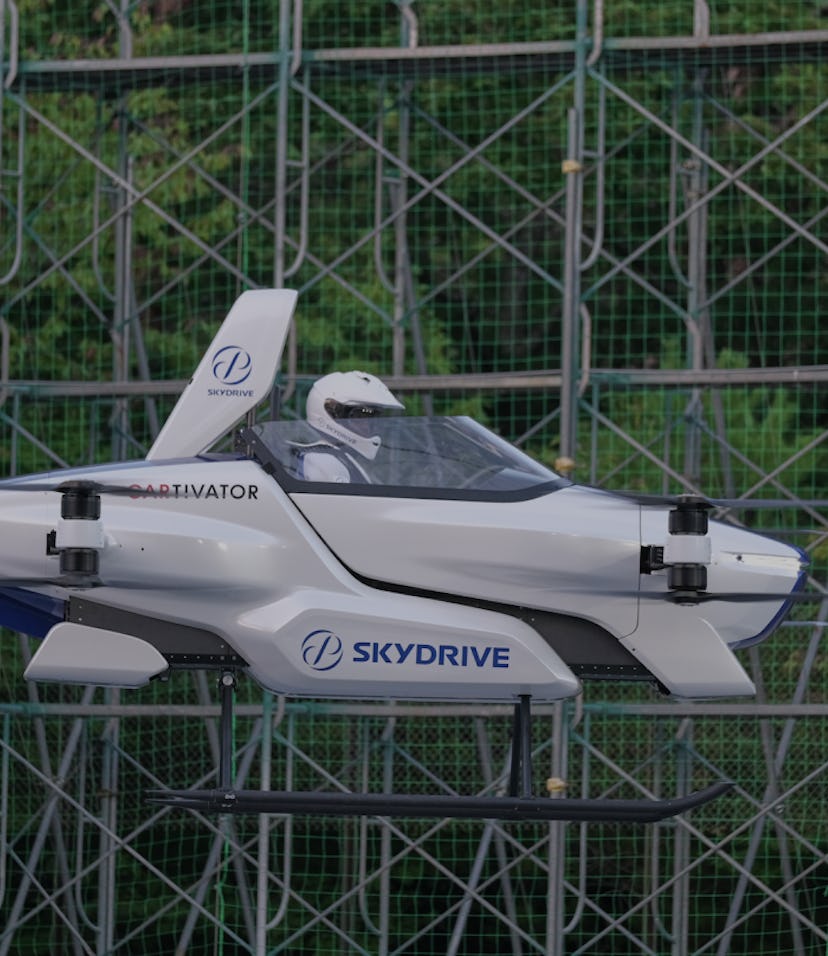Tech
SkyDrive has built and flown a drone that can carry a person
The company hopes for approval to fly the aircraft beyond test fields by the end of the year.

Japanese eVTOL startup SkyDrive says it completed the first public test flight of its SD-03 on August 25. eVTOLs, or "electric verticle take-off and landing" vehicles, have received a lot of investment as companies hope to revolutionize transport by making it possible for people to take their commutes to the skies and fly over congested urban areas. As the name suggests, they take off straight into the air, meaning a long runway isn't needed. That's perfect for using them to take off from city rooftops, or other high-congestion areas, which is why companies like Uber are especially excited about them.
SkyDrive's SD-03 is a bit slicker than its earlier prototype aircraft, with a white exterior the company says was inspired by "white birds and the floating clouds in the sky." The SD-03 measures six feet high, 13 feet in length, and 13 feet wide. It features two sets of rotors on the front and two on the rear, with each powered by its own motor. The rotors can be shielded behind curved protectors so they don't risk hitting something (or someone). If it looks like a drone with a person in it, that's because that's basically what it is.
They're giant drones — The recent death of Kobe Bryant in a crashed helicopter may scare some away from the idea of flying around in what looks like a helicopter for one. But companies in the industry say eVTOLS are supposed to be safer because they have multiple rotors that function as fail-safes; if one stops working, the others are supposed to be capable of safely returning the aircraft back down to earth. Think of consumer drones from the likes of DJI but scaled up to carry a person or, in larger iterations, multiple people.
The public test of the SD-03 took place over a 2.5-acre test field owned by Toyota, and lasted four minutes. A human piloted the aircraft in circles but onboard software managed flight stability. That will be important if these types of aircraft are actually going to ferry around people who aren't experienced at operating an aircraft in turbulent conditions, or at all.
You won't be taking one anytime soon — Other players in the space include Kitty Hawk — an eVTOL startup backed by Google co-founder Sergey Brin — and Uber, which has partnered with Hyundai, Bell, and other companies to develop an air-taxi service.
None of these projects seem to be close to a public debut, however. Any crash could set back eVTOLs by years or decades — helicopter commuting services used to exist in NYC before a fatal crash brought their demise — so companies are working slowly to ensure the highest possible safety. There are also logistical issues with building out the necessary infrastructure, like command and control centers that ensure aircraft don't, you know, crash into each other. Uber has said it expects any eVTOL air-taxi service to launch by 2028 at the soonest.
By the end of the year, SkyDrive hopes to begin testing the SD-03 outside of test fields in Japan so it can prove the technology works in a variety of conditions.